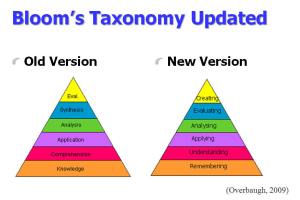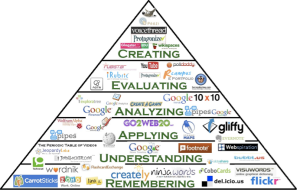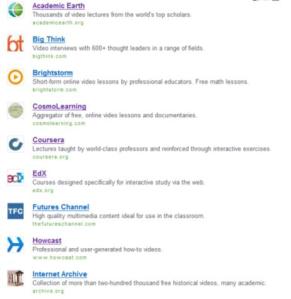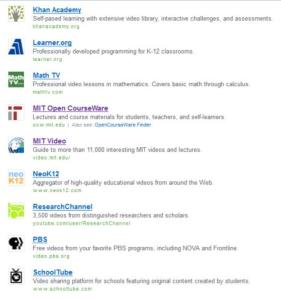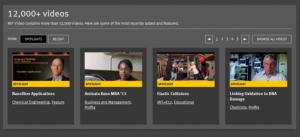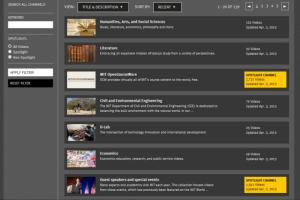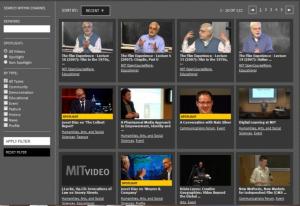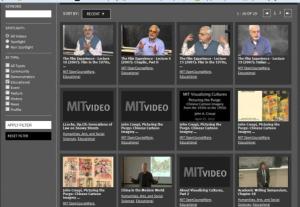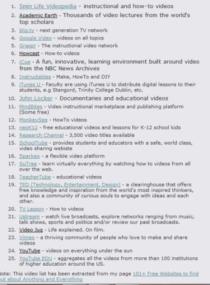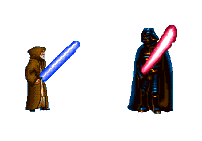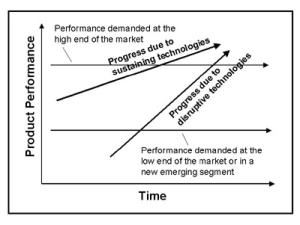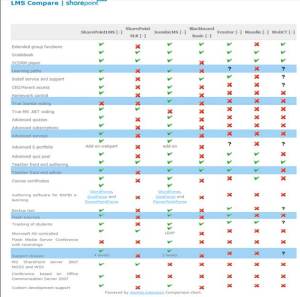A “tutor” is defined by Encarta as 1, a teacher who instructs… 2, a low ranking U.S. university teacher (below the rank of instructor), and 3, an academic responsible for teaching. Oddly, I find no mention of a machine or of a computer in the definition. Intelligent Tutoring is a system – an approach to teaching that relies on computer programing to form and guide interaction with a student; it certainly is not an academic. But could it fulfill the role of teacher?
One thing that Professor Brady mentioned in his podcast really struck home with me: Teaching is a relationship – instruction is an environment. When I pondered this I immediately recalled all of the great teachers I had interacted with in grade school over the years, and how they stimulated my mind and tried to find new ways of explaining concepts until we all finally “got it”. Oftentimes my motivation came from wanting the approval of my teacher. There was most definitely a relationship there – a very human connection characterized by encouragement, support, compassion, intervention. Somehow I don’t think that an IBM, an Apple, an Acer, or even Hewlett Packard will ever be able to provide that.
So do I think that I.T. systems will ever replace a human instructor? I would certainly hope not, as that takes us to that very bleak future Orwell warned us of in his work 1984, or Aldous Huxley’s work, Brave New World. Still, could I.T. be the answer to support learning for some students? There seem to be two main avenues of concern: 1, the limitations of programming or the logic and rules behind the program, and 2, understanding the nature of learning – cognitive functions such to achieve learning. If we consider Vygotsky’s contributions to learning theories, and advocate social constructionism as a viable approach to learning, we endorse the need for social interaction, as knowledge is constructed when individuals exchange information, perception and understanding. When I was young, I was a “bookworm” – I spent all of my free time reading, soon well beyond my “age level”. My “interaction” with each author (insert teacher!) wasn’t totally one sided. I received their messages, learned their vocabulary, reflected on the experiences and dialogue as it was presented, and constructed new knowledge as a result.
In that sense, one can learn via inanimate or mechanical means. A novel, however, is rich in social context. It evokes imagery, shares values and biases, provokes an emotion response. Can an I.T. do that? It would seem that the University of Pittsburgh is moving in that direction with their research (to learn more visit http://www.isp.pitt.edu/research/educational-technology-group ). They are looking onto an approach based on “case-based reasoning systems”. Rather than using the strict logic which might well define the domains of mathematics or chemistry, this approach could be used in less rigorous disciplines. Case studies are an effective tool for applying concepts and developing new insights, and they can be relevant in many instructional areas. U of P is seeking to develop “models for case-based argumentation; bootstrapping case-based development by using annotated case summaries and integrating background knowledge; and studying how cases can bridge the gap between abstract rules and real-life problem situations.”
Case studies could introduce that all important social exchange, they could “contextualize” the concepts and meanings so that the student could use them in knowledge construction. Still, I.T. systems as a whole have other shortcomings. As noted in the wiki on Intelligent Tutoring posted at Wikipedia, “pedagogy of immediate feedback and hint sequences that are built in to make the system “intelligent”. This pedagogy is criticized for its failure to develop deep learning in students”. The learner needs to feel some cognitive “tension” in the learning process, there needs to be enough challenge to motivate the learner to reach into the recesses of their mind and draw inferences, thus constructing new knowledge. Feedback is a necessary reinforcement for learning a lesson “correctly”, however if hints are too readily available, there is no tension, and therefore no deep learning. As I.T. systems go forward, they will need to incorporate the logic and rules of the subject matter, a form of social interaction and context, and also a means of better gauging the student’s frame of mind.
In researching this topic, I ran across Dr. Nish Sonwalker (Sc.D., MIT). He is an advocate for Brain-based Adaptive learning systems. This approach to I.T. is not domain specific and offers a more holistic approach to learning. Feedback is presented by way of different learning strategies, permitting access to different learning frameworks. The adaptive model uses statistical inference to determine the performance trajectory of the student so that the system can react by selecting the teaching strategy that will work best for that particular student. And because this approach is not domain specific, it can be as effective with poetry as with mathematics.
Dr. Sonwalker has several videos available at YouTube; I provide his description and a link to one of them below. On the surface it appears that brain-based adaptive approaches to tutoring might overcome the limitations of other systems noted above. I feel that there is and will continue to be a place for I.T. systems, as a means of augmenting the learning experience for those who struggle in other instructional environments. But it is the richness of exchange that comes from social interaction that develops lasting and meaningful understanding. As we become more global and deal with cultural and economic influences that affect all individuals regardless of their location, it is vital that there be a means to share experiences and perceptions that color our knowledge construction. For this reason, learning needs to take place beyond the instructional environment, it needs to include relationships.
What is the Difference between Intelligent Tutors and Adaptive Learning Systems?
Uploaded on Dec 2, 2011
In this video segment Dr. Nish Sonwalkar (Sc.D., MIT) explains the difference between intelligent tutors and the adaptive learning systems.
The intelligent tutors were created in early 1980, at the time when artificial intelligence was in fashion. The AI was based on rule based systems where certain rules were created based on the expert knowledge to provide feedback in real time. So the tutors normally were very domain specific.
For example math tutors where fed with a knowledge representation for the domain of math with expert rules that were fired when a learner was doing a mathematical task. Based on the answers of a given task subsequent scenario were presented. Each scenario steps led to certain rules that provided led to inference by the intelligent tutor to provide certain feedback or practice test.
By repeated task and feedback intelligent tutors were able to provide reasonable response to each mistake made by the used in their understanding of the mathematical concept. While tutors worked well for a specific domain that was deterministic in nature they failed in areas where there were no correct deterministic answers. Because, there were no if-then-else rules that you could fire in an area like interpretation of poetry.
The Adaptive Learning Systems on the other had represent knowledge in distinct cognitive pathways such as apprentice, incidental, inductive deductive and discovery — providing same content in a different contextual framework thereby providing significant cognitive opportunity to learn. Also in the education adaptive learning systems the feedback is given in a different learning pathway to provide another perspective on the same problem.
Therefore, the an authentic adaptive learning systems is not domain specific and can provide better learning for both scientific disciplines with deterministic answers to domains where the answers are more based interpretation style and there no correct answer.
